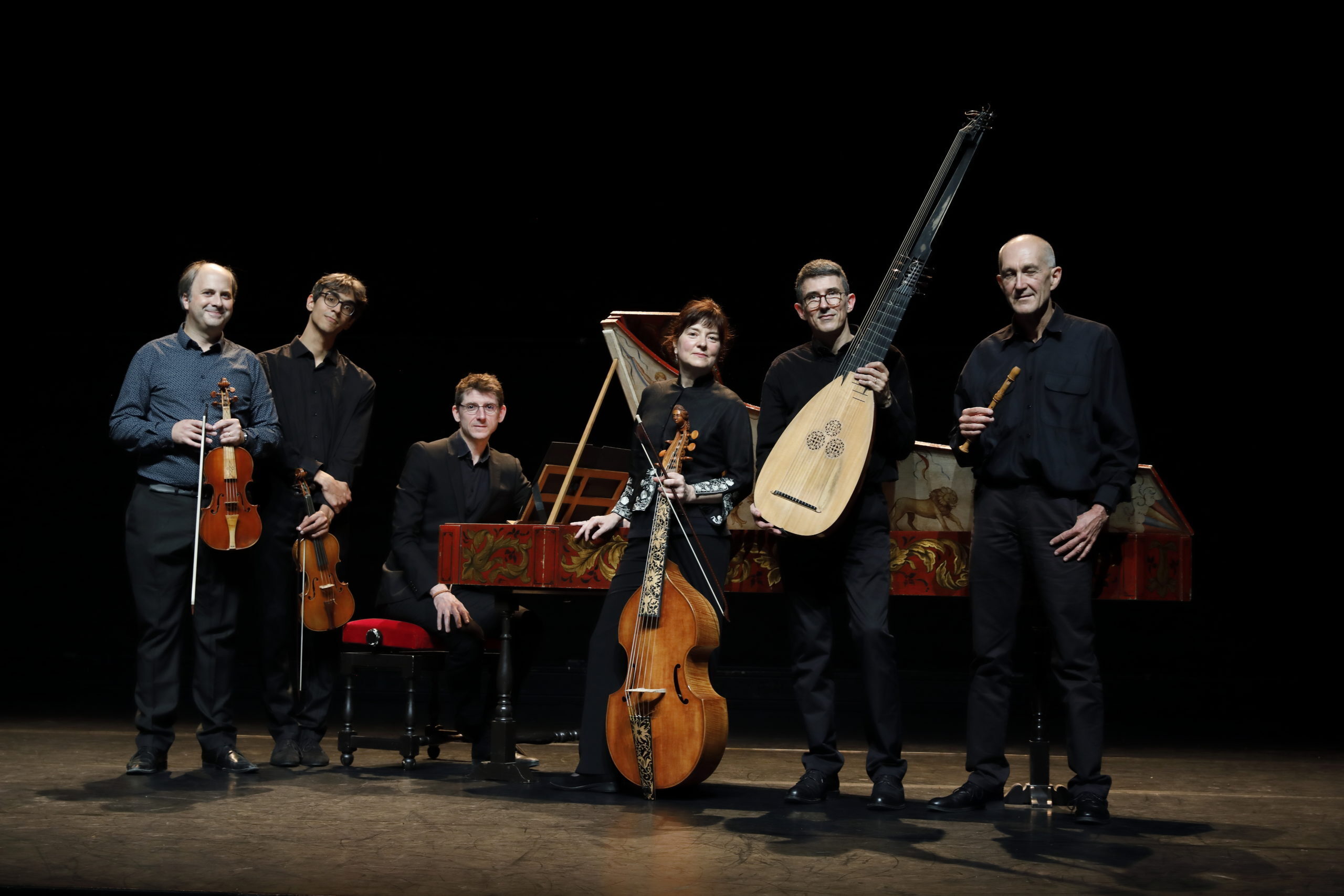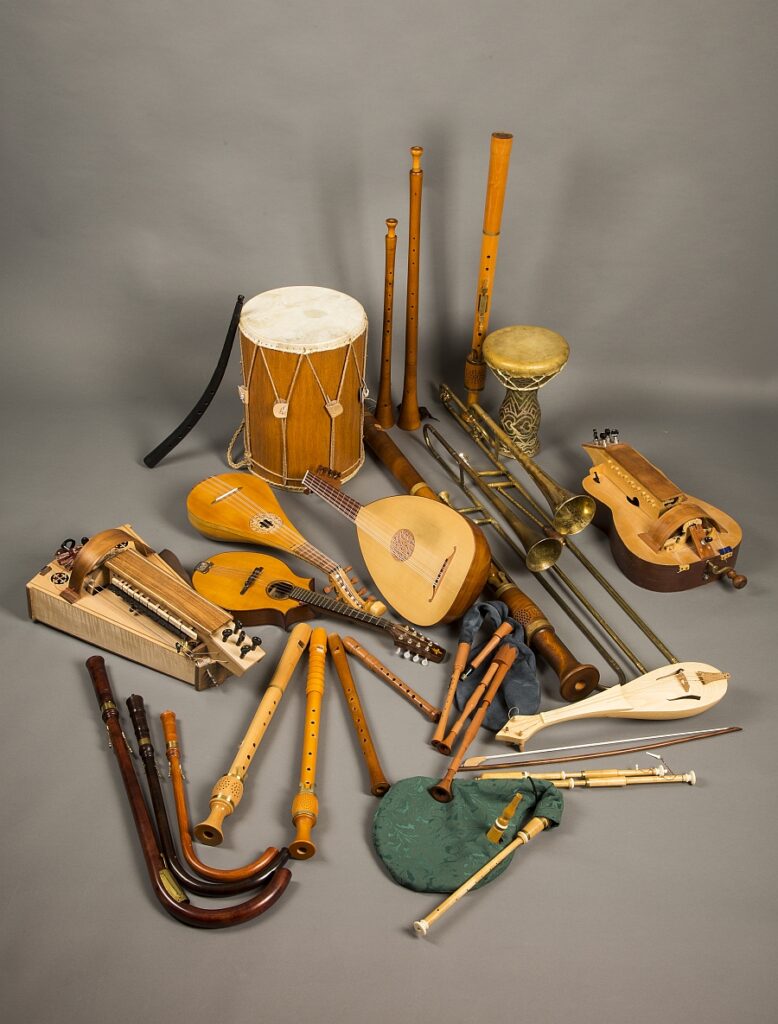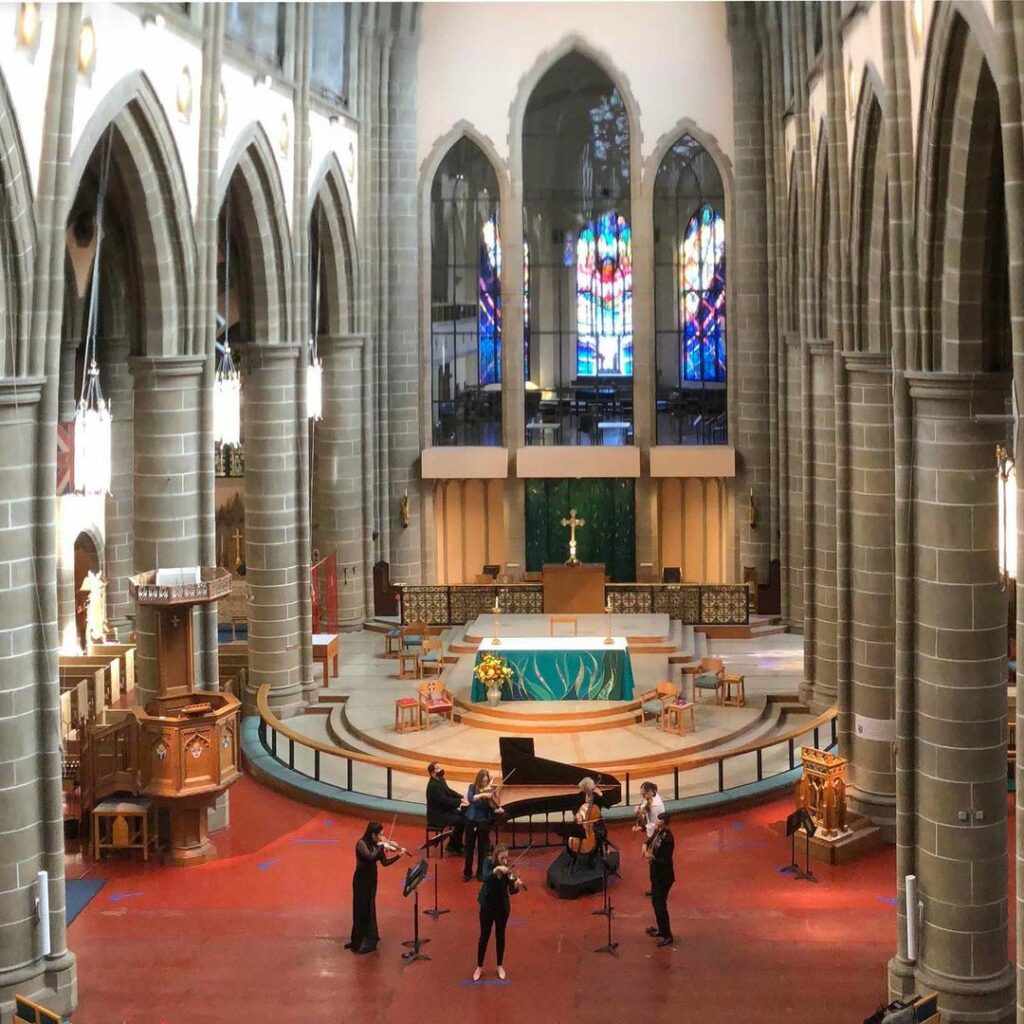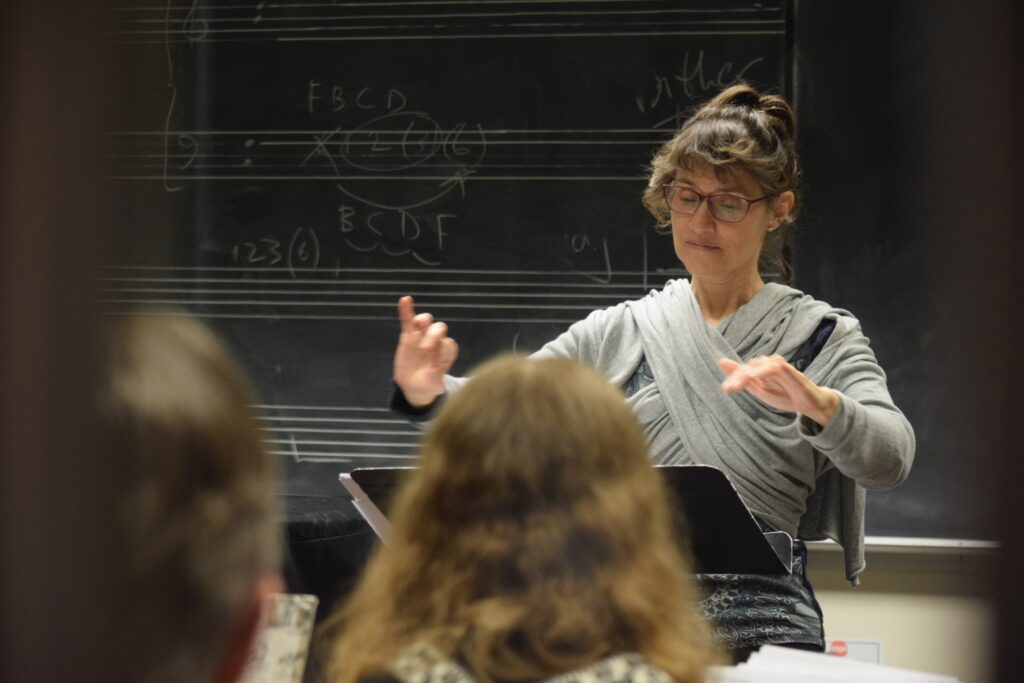What’s Old is New Again
Revitalizing the Pre-Classical Genre with the Early Music Society of the Islands

woRds by siMon oGden / imAges by eMsi
The theorbo, at first sight, is an impossible instrument. It looks like a kind of otherworldly sitar—large-bodied with an extraordinarily long neck and 14 strings—playable only by a ten-foot space creature with tentacles for hands. Introduced in 1580 to be the “perfect accompaniment for voice,” it still holds the title as the largest member of the lute family, and provides the high, sprightly notes typically associated with strummed instruments, while also contributing the deep basso continuo sections usually provided by a double bass or organ.
While the theorbo’s unwieldy size lends itself easily to the spotlight, it’s far from the only curious, bygone instrument to appear at any given show produced by the Early Music Society of the Islands (EMSI): be prepared for crumhorns, shawms, cornetts, vielles, sackbuts, and hurdy-gurdies.
At EMSI’s next performance, Concert of the Birds (April 22, 2023, St. Andrew’s Presbyterian Church), one can witness the theorbo being mastered first-hand—by a typically sized human, no less—and hear the powerful intonations of these largely forgotten, but once incredibly popular, instruments.
The program will be performed by La Rêveuse, a leading early-music ensemble from Orléans, France, featuring a selection of baroque works inspired by nature’s chirpy choir, the birdsong. This subject has informed their choice of instrumentation: theorbo, flutes, viola da gamba (a six-stringed predecessor of the cello), and a recorder and flageolet (both members of the fipple flute family). It’s a rare opportunity to experience the sounds of these far-out instruments in the hands of some of the world’s leading musical authorities.

Even to a fan of classical music, some of these contraptions may seem alien. Contemporary orchestras use essentially the same collection of tools, changing the number of pieces from each family—strings, woodwinds, brass, and percussion—according to the work at hand. But limiting an orchestra’s arsenal in this way is a relatively new restriction. As EMSI artistic and executive director Bill Jamieson says, “There was a huge amount of instrumental experimentation up until the nineteenth century, but then things kind of got petrified.”
Early-music organizations like EMSI exist to ensure that the brilliance and inventiveness of foundational compositions, performed on the instruments through which their audiences first heard them, are not lost to the mists of time.
But there is more that defines “early music” than jolly-sounding instruments. Interpretations of the precise definition vary, but for Jamieson and the EMSI, the general presentation “covers the periods of music composed up until 1800: the Medieval, the Renaissance, and the Baroque.”
After these came the Classical Period, courtesy of upstarts like Mozart and Haydn, which tends to be the prevalent fare for your local philharmonic. While Baroque tunes (from superstars like Bach, Vivaldi, and Handel) were once considered just as mainstream as the Classical canon, in the seventies something interesting started to happen: “This music slowly evolved into what’s now commonly referred to as ‘historically informed performance’—HIP music, if you will,” says Jamieson with a chuckle. “Artists not only discover this music, but try to determine how it was originally performed. They then play it on instruments that would have been in use at the time, which have now been largely forgotten.” Enter the theorbo.

Engaging in HIP requires research—digging for rare treatises and journals that describe the methodology and instrumentation of the era. Following the invention of the printing press in the late Renaissance came an explosion of written material, and with it a specificity, and therefore uniformity, of production. So, the earlier the composition, the more room there is for musicians to bring their own interpretation to it.
“HIP tends to drag everything up into the Baroque Period,” says Jamieson, “because there was scads of material published about it, so there’s more to work with. What I love about EMSI is that we want to present the entire spectrum of this music, chronologically. And there is a lot more flexibility for interpretation the further back you go, which makes it richer and more compelling.” Or as EMSI president Joanne Whitehead says, “It brings a jazz-like freedom into the work.”
Jamieson was himself a symphony musician while studying at UBC in the seventies, a French horn player who dabbled in Renaissance wind music on recorder and crumhorn (a curved double-reed woodwind), before embarking on an accountancy career. He was serving as the ESMI treasurer when long-time artistic director James Young stepped down last year, and Jamieson’s combination of administrative and musical acumen offered the organization a two-for-one deal: he was named both the executive and artistic director for the current season, the society’s thirty-eighth.
While Victoria boasts an above-average number of classical musicians, the rare virtuosos of HIP instruments live and practice in Europe, the UK, the US, other cultural centres in Canada, and beyond.
The EMSI’s mandate is to bring these rare experiences to Victoria, expanding the reach and appreciation for early music here. They have a new initiative to champion local musicians too—the Early Music Community Connection (or “E=mc2,” hinting at Whitehead’s background as a scientist). Through E=mc2 the Society can encourage and support the growth and reach of Victorian early-music players and organizations, through financial and administrative aid.

Jamieson and Whitehead are determined to expand the society’s established fan base, and to continue to build community with the professional early-music scene in BC. The EMSI now offers deals on seasonal programming through its new Flex Pass: tickets may be purchased for four, six, or eight concerts, without having to decide which shows to use them for in advance, right up to the day of the performance. “We always reserve free seats for students and young people at each show as well,” says Whitehead.
Audience-building for early music requires a certain amount of education, which the EMSI is eager to provide. When it comes to questions of the accessibility of their programming, Jamieson understands that “early music, like any classical experience, can be seen as elitist. But it has a musical accessibility, particularly the earliest work, which is extraordinary. There is a lot of commercial music readily available, but there is also a vast treasure trove of early music that needs a home, because it’s wonderful, and we believe Victorians have the right to experience it.”
Learn more about the Early Music Society of the Islands, or purchase tickets to the upcoming Concert of the Birds.
the bastion’s ‘local spotlight’ articles are created in paid partnership

